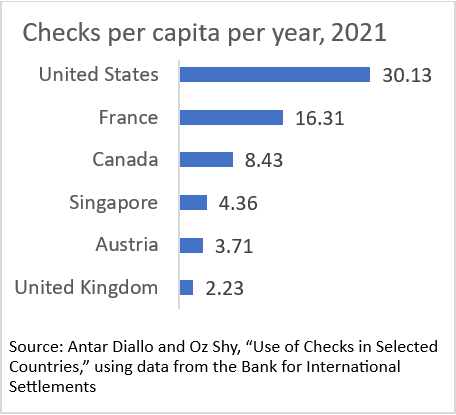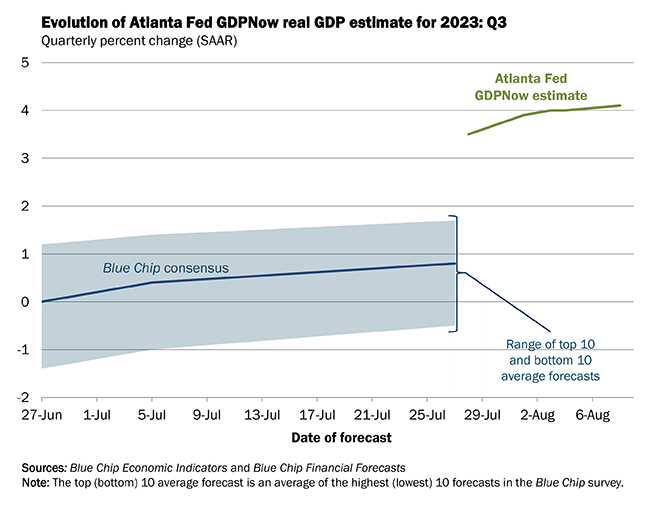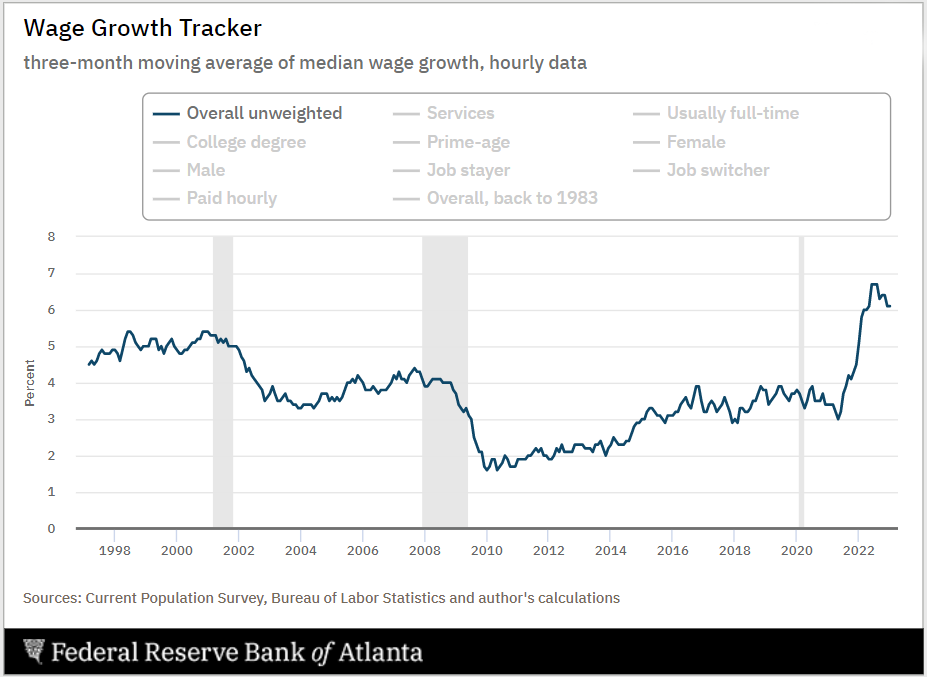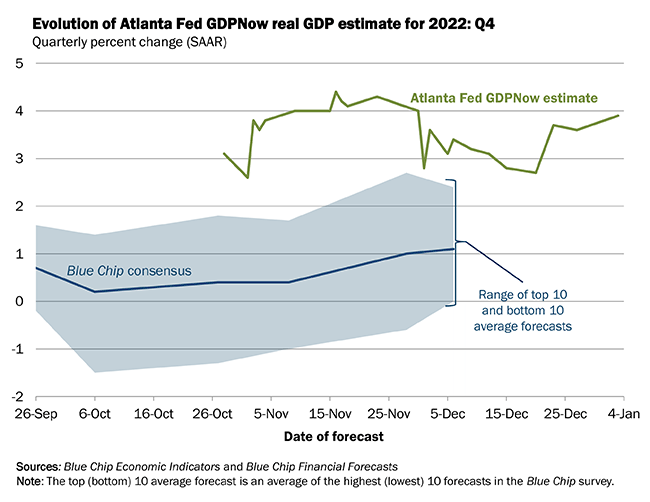Financial System of the Future
Notes from the Vault
Larry D. Wall
November 2019
The financial services business is an information technology business that operates in an environment with substantial government involvement. The state of both technology and government intervention have evolved considerably since the financial crisis that began in 2007, with potentially large implications for the future financial system. With that in mind, the Atlanta Fed recently hosted the workshop Financial System of the Future, which was cosponsored by the Center for the Economic Analysis of Risk (CEAR) at Georgia State University.
This post reviews many of the papers and presentations from the workshop dealing with both financial regulation and innovations in financial technology. It also reviews one of the keynote speeches on the important topic of corporate governance. A companion macroblog post summarizes the workshop’s discussion of digital currencies.
Post-crisis changes in regulation
Some banks had difficulty obtaining adequate funding from private financial markets during the crisis of 2007–08, despite being well capitalized by that period’s capital standards. In part, these funding difficulties were a result of bank depositors fearing that banks had not adequately provisioned for their credit losses.
A paper by University of Michigan professors Thomas Flanagan and Amiyatosh Purnanandam examines the question “Why Do Banks Hide Losses?” [PDF] with a particular focus on the role of shareholder monitoring and management incentives. One problem in conducting such a study is that of separating bad investment decisions from deceptive accounting. This paper exploits an unexpected change in regulation in India to help provide such separation. This regulatory change forced all of the banks in that country to detail the extent of their underreporting of loan losses in 2015. The paper finds that weaker shareholder monitoring and higher-power executive compensation contracts are associated with more underreporting of loan losses.1 This paper helps us to understand how banks exploit accounting discretion over loan losses and reinforces the importance of supervisory oversight.
The funding problems encountered by U.S. banks led to runs and ultimately the collapse of a few banks, but these problems had a significant effect on the operations of some banks that survived. One measure of the vulnerability of a bank to a funding shock was its reliance on uninsured, wholesale deposits from large institutions. Professors Sudheer Chava of Georgia Institute of Technology, Rohan Ganduri of Emory University, Linghang Zeng of Babson College, and graduate student Nikhil Paradkar of Georgia Tech examine one effect of these shocks in their paper “Shocked by Bank Funding Shocks: Evidence from 500 Million Consumer Credit Cards” [PDF]. The paper finds that banks that were more exposed to wholesale funding shocks made larger cuts in consumer credit lines than other banks. The authors further find that these cutbacks were made to the most credit-constrained customers (those with lower credit scores and higher utilization of their credit line). The results also suggest that these credit-constrained consumers responded by cutting back their consumption. Overall, these results provide additional support for regulatory policies intended to strengthen banks so that they can continue lending through future crises.
The Federal Reserve was created in 1913 in large part to provide a source of liquidity during periods of stress in bank lending markets. Yet banks proved surprisingly resistant to borrowing from the Fed’s discount window at the start of the funding problems in the fall of 2007. In an attempt to overcome this reluctance to borrow, the Fed created the Term Auction Facility (TAF) in December 2007. A paper by professors Yunzhi Hu of the University of North Carolina at Chapel Hill and Hanzhe Zhang from Michigan State University examines the TAF in a paper titled “Overcoming Borrowing Stigma: The Design of Lending-of-Last-Resort Policies” [PDF]. This paper develops a simple model in which TAF funding is preferred by stronger banks because the funds are only available with a delay (that is, the funds will not help a bank facing an immediate run) and because TAF gives stronger banks the potential to borrow at lower costs. The paper also provides evidence that when both the discount window and TAF were available, the weakest banks borrowed from the discount window and the relatively stronger banks bid for TAF funds. The results of this study may help to inform the Fed’s policies on the provision of emergency liquidity in the future.
In the post-crisis period, the bank supervisors agreed to adopt new liquidity rules and strengthen existing capital requirements at the Basel Committee on Banking Supervision. A paper by Harvard University professor Daniel Roberts and Federal Reserve Bank of New York economists Asani Sarkar and Or Shachar examines the Basel liquidity requirements in the paper “Bank Liquidity Creation, Systemic Risk, and Basel Liquidity Regulations” [PDF]. The paper finds that the new regulation has the cost of reducing bank liquidity creation in normal times but also results in more resilient banks in a crisis. The authors estimate both the costs and benefits of the regulation and find that the benefits in terms of a more stable financial system exceed the costs of the reduction in liquidity.
Josef Schroth, an economist at the Bank of Canada, analyzes the question of how regulators could use capital regulation to smooth bank lending through a recession and financial crisis in his paper “Macroprudential Policy with Capital Buffers” [PDF]. Banks in his model hold sufficient capital in most periods but have insufficient capital to retain uninsured market funding during crises, which leads to severe credit crunches. Bank regulators can smooth lending by requiring banks to hold more capital during good times, also allowing banks to operate with reduced capital during a crisis and rebuild their capital gradually after a crisis. The paper’s findings are consistent with the Basel III’s creation of a capital conservation buffer and countercyclical capital buffer.
Issues related to bank capital have been the subject of ongoing discussion among academics, bankers, and regulators since the crisis. Bank of Finland economists Gene Ambrocio and Esa Jokivuolle, along with professors Iftekhar Hasan from Fordham University and Kim Ristolainen from the University of Turku, surveyed the views of banking and finance academics and reported the results in the paper “Are Bank Capital Requirements Optimally Set? Evidence from Researchers’ Views” [PDF] (slide deck [PDF]). The survey obtained results from 149 leading academic researchers. It found that most respondents believe that higher capital ratios would reduce the likelihood of a crisis and the social costs associated with a crisis. Most respondents thought an increase of 5 percentage points in capital would increase the average cost of capital and reduce bank lending. However, a majority said that this reduction in lending would result in “minimal to no change” in economic activity.
Fintech lending
Banks have historically been important suppliers of credit to consumers and small businesses. However, since the crisis, lending by some fintech firms to these borrowers has grown rapidly. The conference addressed a variety of questions such as the sources of competitive advantage to fintech lenders; competition between fintech lenders, small banks, and large banks; and the impact of fintech lending on consumers. Additionally, the conference looked at post-crisis changes in bank securitization rules, which may have some relevance to fintech lenders’ efforts to fund their loans.
Banks, especially large banks, have long used statistical analysis to help them predict the credit riskiness of consumers and small businesses. However, fintech firms have promoted their use of machine learning techniques as resulting in better credit analysis. Economist J. Christina Wang and former research associate Charles B. Perkins from the Federal Reserve Bank of Boston explore the value added of some machine learning techniques in their paper “How Magic a Bullet Is Machine Learning for Credit Analysis? An Exploration with Fintech Lending Data” [PDF]. In particular, they examine the contribution of tree-based models using data from LendingClub, a fintech lender. Tree-based models provide easily understood decision rules that are valuable for demonstrating compliance with U.S. fair lending rules. The results indicate that tree-based machine learning improves prediction accuracy, in part by uncovering notable interactive effects. These models benefit from additional data (albeit only up to about 5,000 observations) and from the addition of more predictors. However, exactly which tree-based approach worked best varied across different subgroups of consumers.
Many large banks retreated from some types of retail and small business lending. In part, this pullback was likely to due to a combination of the increased riskiness of these loans and the tightening of bank capital requirements. However, fintech lenders have been expanding into some of the same spaces, raising the question of whether the reduced lending by big banks was due in part to competitive pressure from fintech firms. It also raises the question of whether smaller banks were also retreating due to increased competition or expanding to help fill the void left by the larger banks. Two papers examine the rise of fintechs in two different lending markets and analyze what developments in these markets tell us about big versus small banks.
Professors Taylor Begley from Washington University in St. Louis and Kandarp Srinivasan from Northeastern University focus on mortgage market lending in their paper “Small Bank Lending in the Era of Fintech and Shadow Banking: A Sideshow?” [PDF]. Their paper observes that fintech lenders rely largely on government-supported loan securitization programs such as those of Fannie Mae, Freddie Mac, and the Federal Housing Administration. However, not all mortgage loans qualify for these programs in large part due to limits on the maximum size of the loan. Thus, fintech mortgage lenders were able to take nationwide market share in government-supported loans from the large banks. Nevertheless, it was the small banks that stepped in to provide mortgage loans that did not qualify for government-supported securitization. As a result, small banks have proven more responsive to the withdrawal of bigger banks and have maintained nearly constant market share through the period from 2009 to 2013.
The paper “What Is Fueling the Fintech Lending Revolution? Local Banking Market Structure and Fintech Market Penetration” [PDF] by professor Tetyana Balyuk of Emory University and professors Allen N. Berger and John Hackney from the University of South Carolina studies the rise of fintech lenders in small business lending. The authors find that fintech lenders’ market penetration is associated with lower small bank market shares, consistent with the decline of small banks over time and helping to explain fintech lenders’ success. They also find evidence that small banks tend to make safer loans than fintech firms. Finally, looking at the contribution of different lenders to employment, the authors find that fintech matters most for the smallest businesses, small banks matter more for larger small businesses, and neither matters for large businesses.
As fintech lending has grown, the question of whether it is good for consumers has also arisen. This may be a trick question. We have long known that if people are given a choice, some will use it wisely and others will not. Last year’s CEAR–CenFIS conference provided some evidence of how consumers manage their finances after borrowing from fintech lenders (see “Winners and Losers of Marketplace Lending: Evidence From Borrower Credit Dynamics” [PDF] and “The Real Effects of Financial Technology: Marketplace Lending and Personal Bankruptcy” [PDF]). This year, Federal Reserve Board economists Traci Mach and Timothy Dore provided additional evidence in the paper “Marketplace Lending and Consumer Credit Outcomes: Evidence from Prosper” [PDF]. The authors were able to match application data from one lender to credit bureau data. They find that relative to applicants without an origination, borrowers see an increase in their credit scores and total debt, but decreases in their delinquency rates. The increase in mortgage debt balances was especially notable.
An important issue for any type of lender is its access to funding. Banks fund their loans with a combination: (a) their own liabilities in the form of deposits and other market borrowings and (b) loan sales to investors. The risk with on-balance-sheet lending is that too many loans will turn bad, the bank will suffer large loan losses, and depositors will flee the bank. Although some fintech firms fund loans with their own liabilities, most of their loans are funded by sales to investors. The advantage to the loan originator of selling loans is that, if the loan goes bad, the buyers of the loan bear the credit losses. However, such sales can lead to concerns that the bank or fintech originating a loan will not be as careful in underwriting and monitoring as they would be with the loans they retain on their own books. The result can be similar to that discussed in the Chava et al. paper, where originators have to reduce their lending volume.
One alternative that may have the effect of improving banks’ incentives and thereby mitigating investor concerns is that of having the bank retain part of the credit risk on the loans it sells. Professor Martin Hibbeln and graduate student Werner Osterkamp from the University of Duisburg-Essen study the effect of bank loan retention in their paper “The Impact of Skin in the Game on Bank Behavior in the Securitization Market” [PDF]. The authors exploit changes in European Union regulations to study loans sold by European banks in the securitization market. They find evidence that retention of part of the risk of a loan does not improve the quality of the loans being securitized.
Corporate governance
The role of shareholders in corporate governance is important for both financial and non-financial firms. The last few decades have seen shareholder governance power increasingly concentrated in institutional investors such as mutual funds and pension funds. Although a few of these institutional funds are explicitly focused on corporate governance issues, most are not. However, even the funds that are not focused on governance nevertheless have an interest in participating in governance decisions. The problem for these investors is how to keep up with the many issues requiring a shareholder vote. The answer for a large fraction of institutional investors is to seek information and advice from proxy advisory firms. The role of these advisory firms was the topic of Carnegie Mellon University professor Chester Spatt’s dinner speech titled “Proxy Advisory Firms, Governance, Market Failure, and Regulation” [PDF] (See also his related paper [PDF].)
Spatt observed that the importance of proxy advisory firms is easy to understand. All shareholders in a firm face the same questions, and there is similarity in questions across firms. However, any one shareholder obtains only a small fraction of the gains from better governance while potentially paying all of the costs of analysis. In this setting, proxy advisory firms are a predictable market solution to a potential free-riding problem. The increasing returns to scale that arise in this setting also naturally lends itself to the development of a monopoly—or in this case, a duopoly. The result can be reduced incentives for the two proxy advisory firms to avoid factual mistakes and increased power for the advisers to impose their philosophy on firms. Spatt discussed a variety of steps the Securities and Exchange Commission has taken and further actions that could mitigate these concerns. However, the problem of what to do about the role of institutions and proxy advisers in corporate governance is one that may not be totally solvable, but rather requires careful management over time.
Conclusion
The post-crisis period has seen dramatic changes in both information technology and government regulation. The papers presented recently at a workshop at the Atlanta Fed analyzed a number of these changes and contribute to our understanding of how the financial system is likely to evolve in the future.
Larry D. Wall is executive director of the Center for Financial Innovation and Stability at the Atlanta Fed. The author thanks Brian Robertson for helpful comments. The view expressed here are the author’s and not necessarily those of the Federal Reserve Bank of Atlanta or the Federal Reserve System. If you wish to comment on this post, please email atl.nftv.mailbox@atl.frb.org.
For further discussion on banks’ reporting of loan losses, see Larry’s recent post on changes to U.S. accounting rules.






